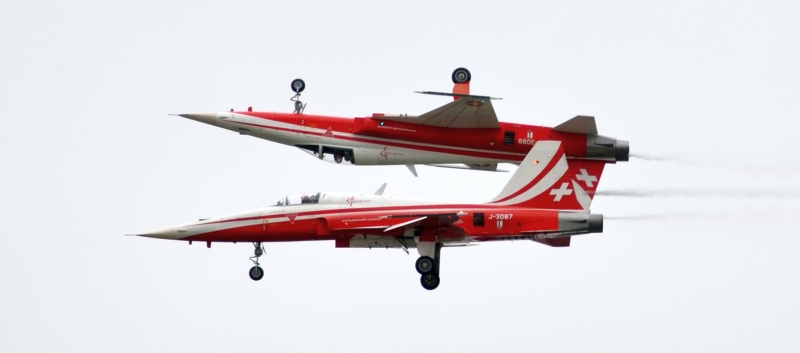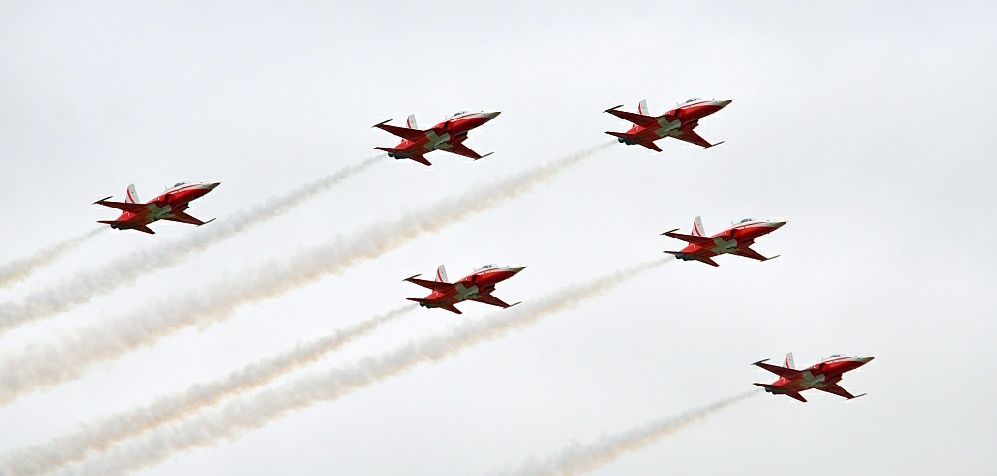June 2020
IAI F-21A Lion/Kfir C.1
Northrop F-5E Tiger II
Link to Website Index: 
Israel Aircraft Industries F-21A Lion/Kfir c.1
VF-43 USN, NAS Oceana, Virginia, 1986
Italeri 1/72

Link to Website Index: 
The IAI Kfir is an advanced derivative of the Dassault Mirage V, with its origins
in the late 1960s Israeli “Nesher” project which produced unlicensed Mirage V aircraft
using stolen plans and with covert technical assistance from sympathetic western
sources.
The original Mirage V was designed by Dassault to Israeli specifications, producing
a simplified aircraft that was optimised for ground attack in the middle east. However,
shortly before delivery, the French government introduced strict sanctions on the
supply of arms to Israel in response to Israeli raids on Lebanon and the Israeli
aircraft were impounded in France.
To prevent a similar event in the future, the Israelis decided to built an indigenous
version of the Mirage, reverse engineering the design from pre-delivery documents
and plans, and using covert means to obtain those items that were missing. The Nesher
(Griffin Vulture) proved itself during th e 1973 Yom Kippur war, scoring over a hundred
kills against Arab forces. A modified variant known as the Dagger was also used
very successfully by Argentina during the Falklands war.
From 1974 a more advanced Israeli version, known as the Kfir (Lion Cub) was produced
by IAI. The most obvious difference was the introduction of the more powerful US
General Electric J79 engine, also used in Israel’s Phantom jets. This required enlargement
of the rear fuselage and the addition of prominent auxiliary cooling intakes. Modernised
avionics and an increase in fuel gave the Kfir a significant advantage over the Nesher
design. Kfirs remained in Israeli service until the mid 1990s.
In 1985, the US Navy and USMC acquired 25 ex-Israeli Kfirs to use as Aggressor aircraft
for dissimilar air combat training. The aircraft was chosen because its performance
and size were similar to the widely exported Soviet MiG-23 which was increasingly
likely to pose a threat to USN operations. USN Aircraft were allocated to VF-43
“Challengers” at Oceana Naval Air Station. The aircraft were withdrawn in 1989 and
replaced by F-16Ns.
Building the Italeri F-21A kit:
This is one of Italeri’s better kits, first released in 1987. It has slightly over-soft
engraved detail, reasonable cockpit detail and adequately boxed in wheel wells. Fit
is good in all areas except the air intakes, which are overly complex and difficult
to assemble tidily - I had to use some Tippex filler to tidy the inevitable gaps.
The canopy is also a slightly vague fit, which wil require carefull cleaning before
assembly. However, the wing to fuselage fit, so often the bane of Mirage models
is particularly well executed and did not require any filler. The three-tone camouflage
and decal application is more difficult than it should be, not least because Italeri’s
painting instructions are vague and incomplete. Indeed there are two embarrassing
mistakes in my build, only one of which I can blame on Italeri - no prizes for spotting
them! However the decals applied well and settled without any silvering. Two ACMI
Pods are provided for the wing pylons along with a large centre fuel tank.
I don’t believe they would carry more than one ACMI pod on an aircraft and reference
photos confirm this suspicion, so I modified one to be a dummy Sidewinder/Acquisition
pod. Similarly, I doubt that the centreline tank is used for other than ferry flights
as it would limit manoevering, although there are photos showing it being carried.
Wire ejector seat handles were added to the seat, but other than that, the kit is
built as supplied and looks to be a good replica of this sleek and aggressive design.
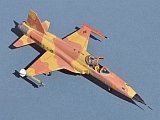
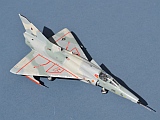
Northrop F-5e Tiger II
VMFT-401 “Snipers” USMC, MCAS Yuma Arizona, 1996
Airfix 1/72 with weapons fit modified
In many ways, Northrop's F-5 was the US' answer to the MiG-21. Relatively low cost
to acquire and run, easy to maintain, aggressive looking and remarkably effective
in the air, in its original 1960s F-5A & twin seat F-5B Freedom Fighter guise it
was the ideal aircraft for US Client nations that might find themselves facing the
MiG.
Over 800 were built with most being exported. The upgraded F-5E and twin seat F-5F
Tiger were introduced in 1972 and brought more powerful engines, more fuel, radar
and aerodynamic improvements to keep it a credible combat aircraft, with 1,400 being
built mainly for US allies, in a production run that ended in 1987. It also formed
the basis of the USAF T-38 Talon trainer aircraft of which a further 1,200 were built
and a dedicated reconnaissance version, the RF-5 Tigereye, also saw service. An advanced
version, the F-20 Tigershark, was a competitor of the F-16 in the 1980s USAF Light
fighter competition, but was cancelled in 1986 when no orders materialised, although
some elements of the design were carried forward into the YF-17 and F/A-18 Hornet
aircraft for the US Navy.
The Iranian Armed Forces have also produced locally designed aircraft derived from
the basic F-5 design, although not in large numbers.
Because of its small size, manoeuvrability and similar flying characteristics to
the MiG-21, the USAF, US Navy and US Marines have all used F-5Es and ex Swiss F-5Ns
as aggressor aircraft for dissimilar air to air combat training, with the aircraft
painted in a range of schemes and markings intended to simulate aircraft from likely
adversary nations.
Building the Airfix F-5E kit:
This was my first build of the 1983 F-5E Airfix kit, in this case in its starter
kit guise. I have also built the earlier 1966 era Airfix F-5A kit, which is one to
be avoided at all costs!. This one is much nicer, still a little chunky and crude
in places, but at least the parts fit. The kit is a relatively easy build, although
it will be very fragile in its finished form, so not really one I would have chosen
for beginners. Nevertheless, I doubt that F-5 enthusiasts will choose this kit over
the more accurate and sophisticated offerings form other manufacturers, so I guess
Airfix has to make the most of the mould. The open canopy option is a nice touch,
one that others could follow.
In the end, my choice of colours was limited by what I had available during lockdown
and I had hoped to replicate the effect I achieved on my A-6 Intruder build, which
started off looking like a cartoon cow, but toned down well after a light stone wash.
This time I wasn’t quite so successful and the lighter colour is definitely too strong
and yellow. Nevertheless, this was an enjoyable build that cost less than £5 from
Hornby in Swindon and complements my Kfir well.
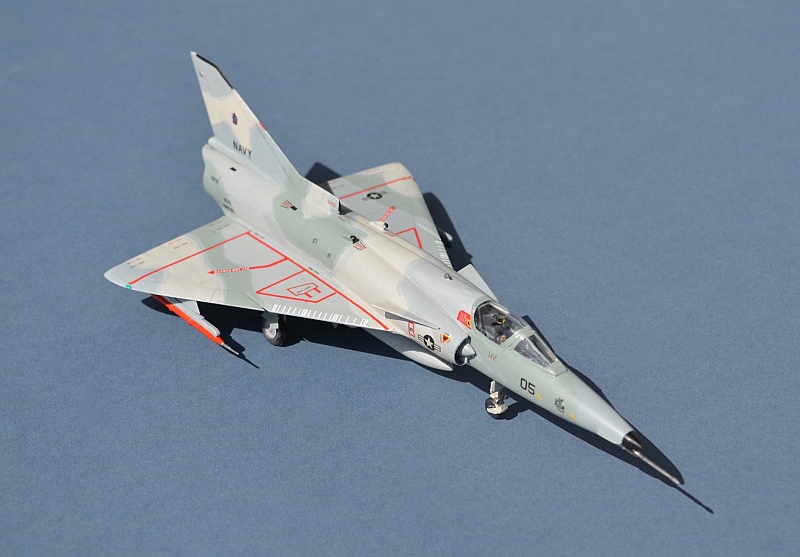
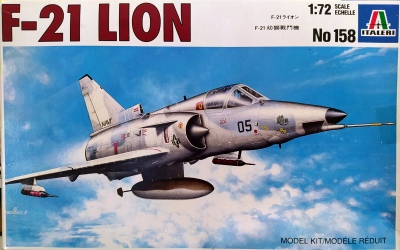
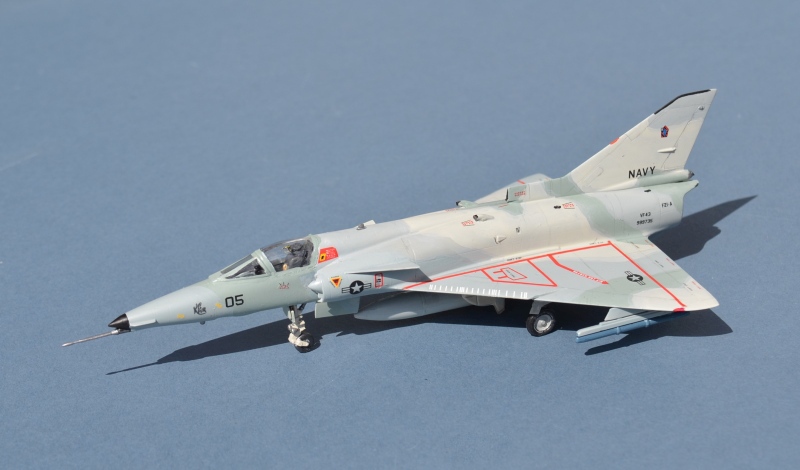
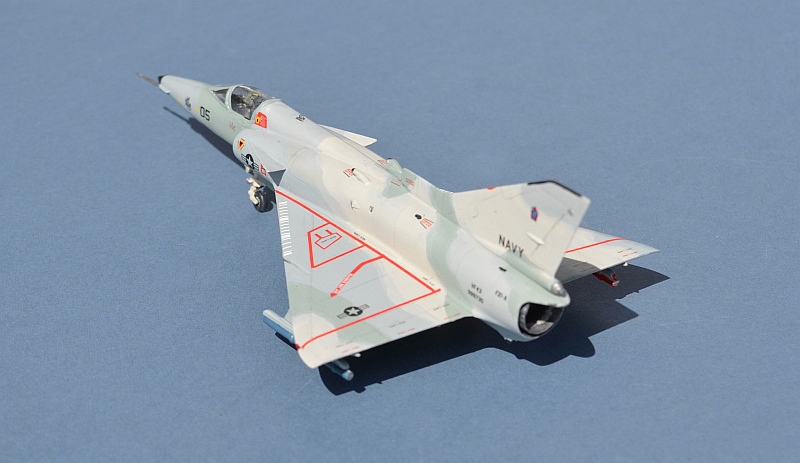
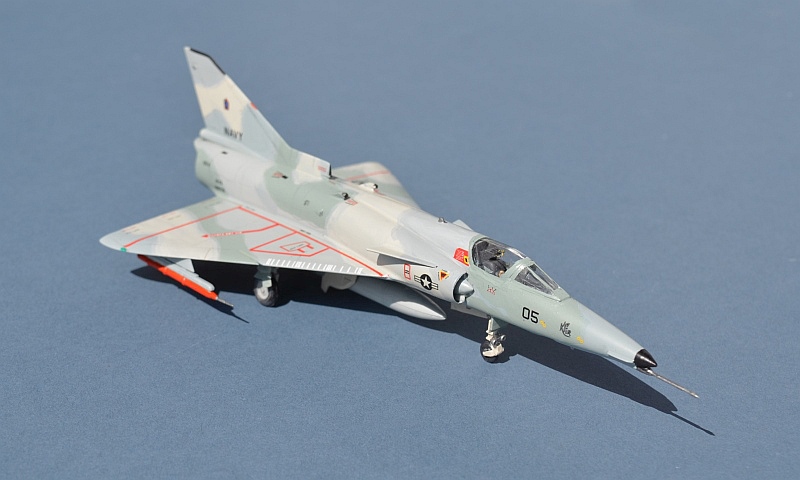
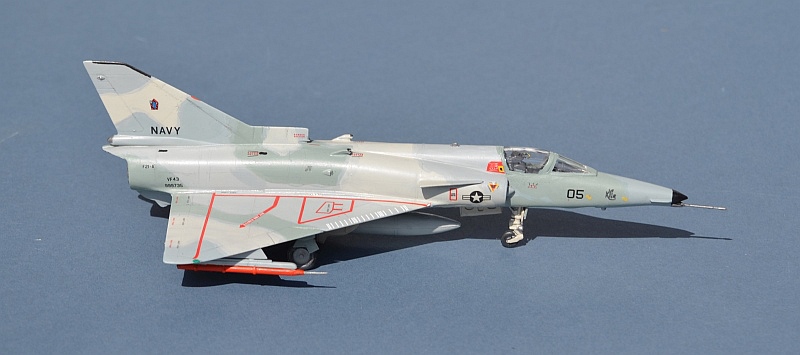
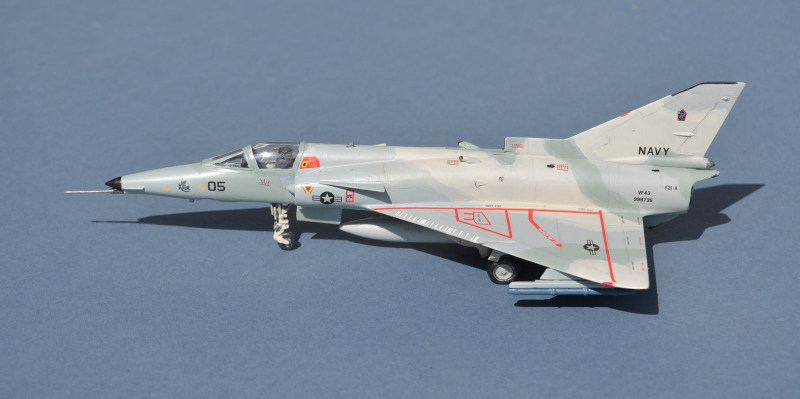
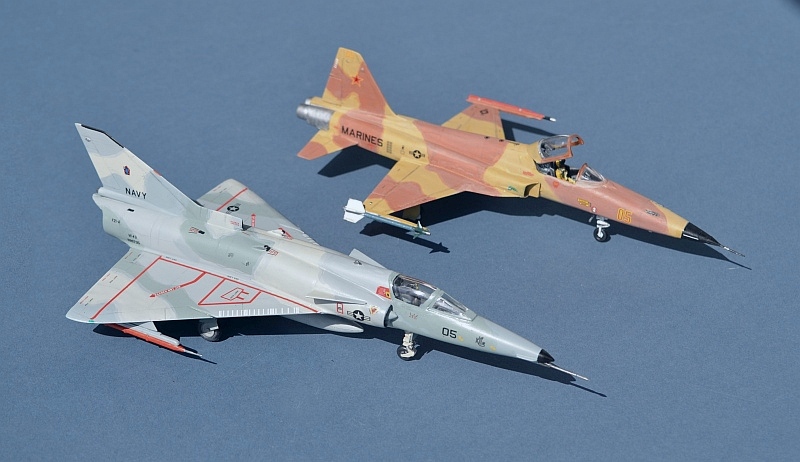
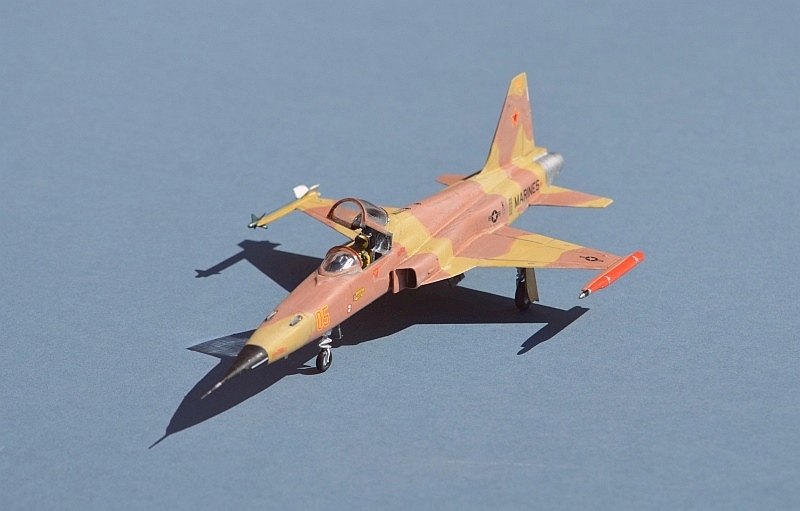
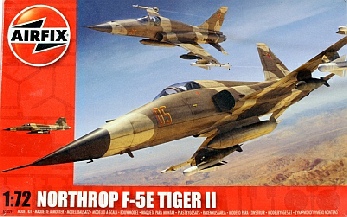
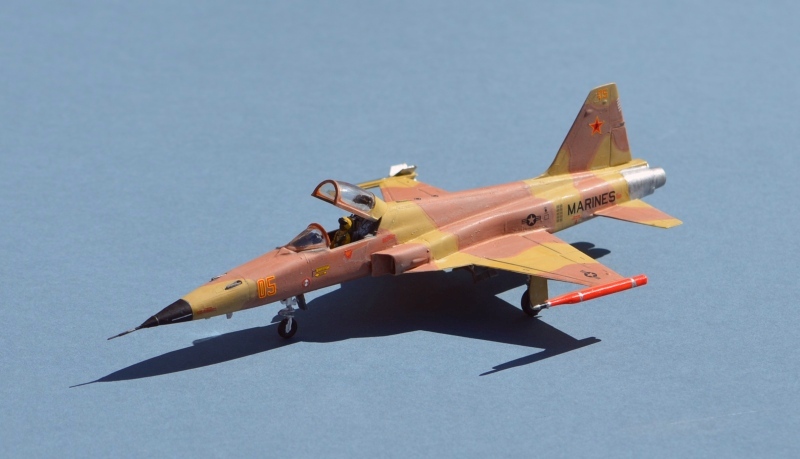
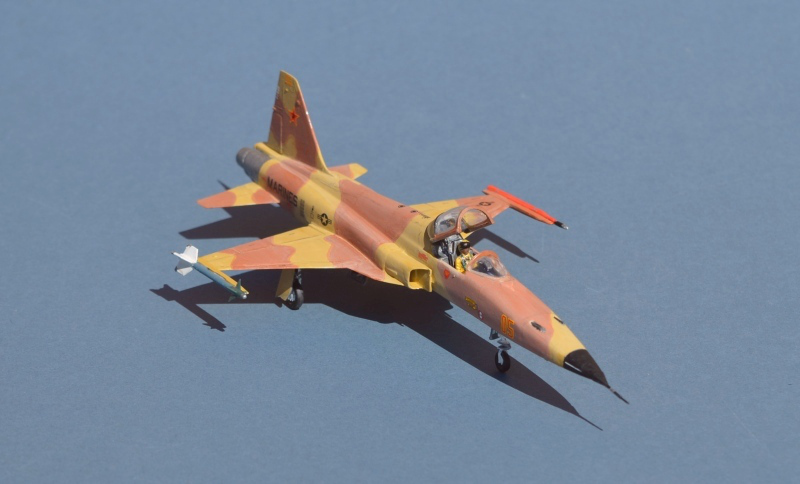


And finally…..
Here are some real F-5Es, operated in this case by the Swiss Air Force aerobatic
team, as seen at RIAT a few years back.
